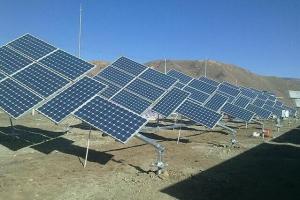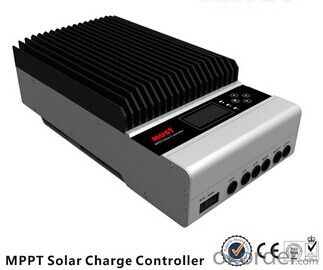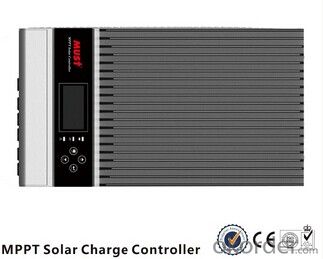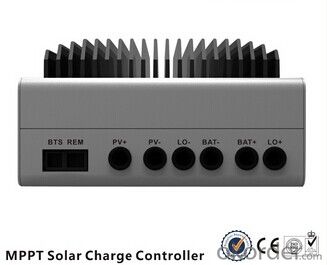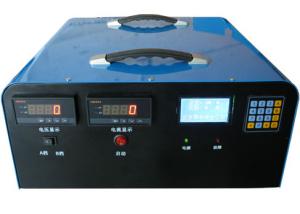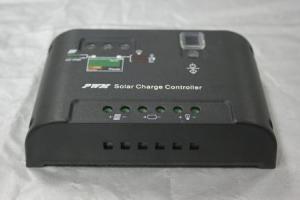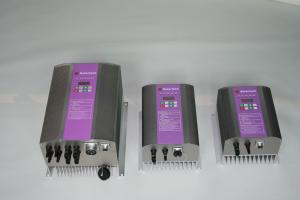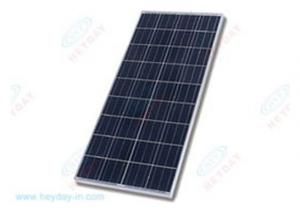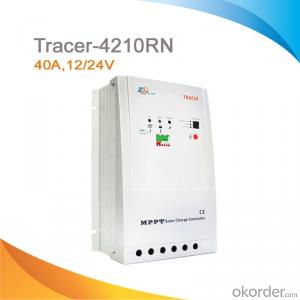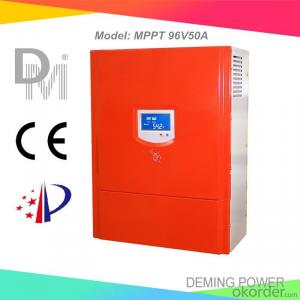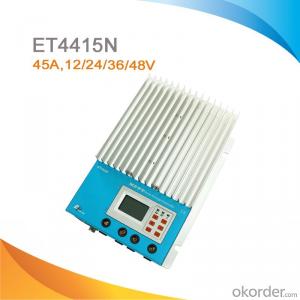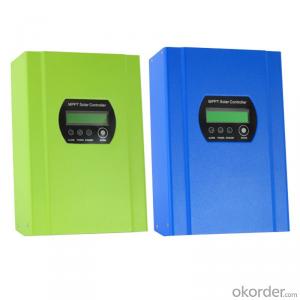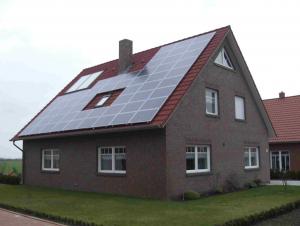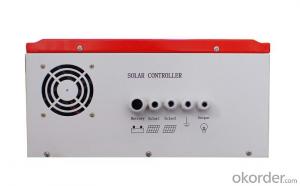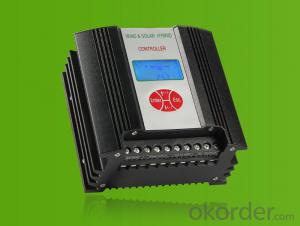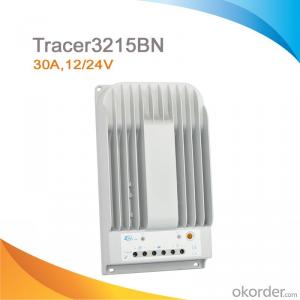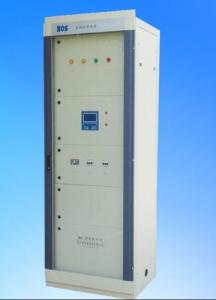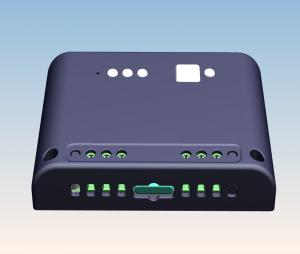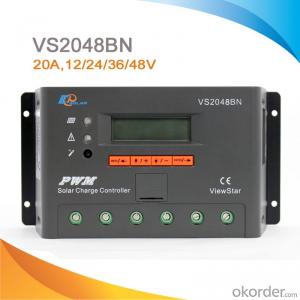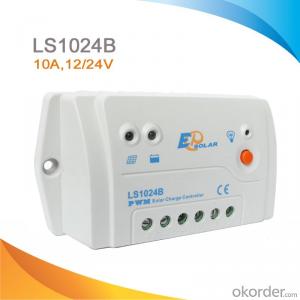Windy Nation MPPT Electronic Controller High Efficiency 45A Good Quality Solar Controllers
- Loading Port:
- Shekou
- Payment Terms:
- TT or LC
- Min Order Qty:
- 100 pc
- Supply Capability:
- 100000 pc/month
OKorder Service Pledge
OKorder Financial Service
You Might Also Like
MPPT Electronic Controller High Efficiency 45A
1. MPPT Solar Charger Controller Characteristics:
1. MPPT Solar charge controller 20A,30A,40A
2. MPPT efficiency max 99%,Peak conversion efficiency >98%
3.PV input :100V or 145V max
4.12v/24v auto work
5.DSP processors architecture ensures high speed and performance
6.Four stages charging method
7.Protection :PV arry short circuit ,PV reverse polarity ,battery reverse polarity,over charging ,output short circuit.
2. MPPT Electronic Controller specifications:
| Model | PC16-4515A | PC16-6015A | |
| Default Battery System Voltage | 12V/24V/36V/48VDC (adjustable) | ||
| CONTROLLER INPUT | PV Open Circuit Voltage Range | 16V~100V for 12V battery system/32V~145V for 24V battery system/ 48V~145V for 36V battery system/64V~145V for 48V battery system | |
| Max PV Input Power(12V) | 600W | 800W | |
| Max PV Input Power(24V) | 1200W | 1600W | |
| Max PV Input Power(36V) | 1800W | 2400W | |
| Max PV Input Power(48V) | 2400W | 3200W | |
| BATTERY | Limited charge voltage | 15.5~16.0VDC/31.0~32.0VDC/46.5~48.0VDC/62.0~64.0VDC | |
| Equalizing charge voltage | 15.0~15.5VDC/30.0~31.0VDC/45.0~46.5VDC/60.0~62.0VDC | ||
| Boost charge voltage | 14.0~15.0VDC/28.0~30.0VDC/42.0~45.0VDC/56.0~60.0VDC | ||
| Float charge voltage | 13.2~14.0VDC/26.4~28.0VDC/39.6~42.0VDC/52.8~56.0VDC | ||
| Equalizing charge interval | 3~30day | ||
| Equalizing charge time | 1H~3H | ||
| Boost charge time | 1H~3H | ||
| DC OUTPUT | Output Voltage | 9.8~16.0VDC/19.6~32.0VDC/29.4~48.0VDC/ 39.2~64.0VDC | |
| Peak Conversion Efficiency | 98% (MPPT Efficiency 99%) | ||
| Max Charging Current | 45A | 60A | |
| Warning for low voltage | 11.8VDC/23.6VDC/35.4VDC/47.2VDC(Adjustable) | ||
| Cutoff for low voltage | 9.8VDC/19.6 VDC/29.4VDC/39.2VDC(Adjustable) | ||
| Low voltage recovery | 12.0~13.0VDC/24.0~26.0 VDC/36.0~39.0VDC/48.0~52.0VDC(Adjustable) | ||
| GENERAL SPECIFICATION | Charge mode | MPPT, PWM, constant current-constant voltage, function of automatic protection for storage battery | |
| Radiating mode | Air cooling | ||
| Working mode | Four stage: Absorption CC, Absorption CV, Float CC, Float CV | ||
| Light controlled open voltage | 5V | ||
| Light controlled delay time | 5min | ||
| DISPLAY & PROTECTION | LED indication | Systematic operation, LV indication, LV protection, over charge protection, loads protection, short circuit protection | |
| LCD display | Charge voltage, charge current, voltage of storage battery, capacity of storage battery, output current | ||
| Alarm Protections | PV array short circuit, PV reverser polarity | ||
| Battery reverse polarity, Over charging protection | |||
| Output short circuit protection | |||
| Low voltage protection for storage battery | |||
| MECHANICAL SPECIFICATIONS | Mounting | Wall mount | |
| W*H* D(mm)/G.W(kg) | 170*259*128mm/4.2kg | 170*289*128mm/4.8kg | |
| OTHER | Environmental Rating | Indoor | |
| Operation Temperature Range | -35~45°C | ||
| Ambient humidity | 0~90% relative humidity(non-condensing) | ||
| Altitude | ≤3000m | ||
3. MPPT Solar Charger Controller Production Line:
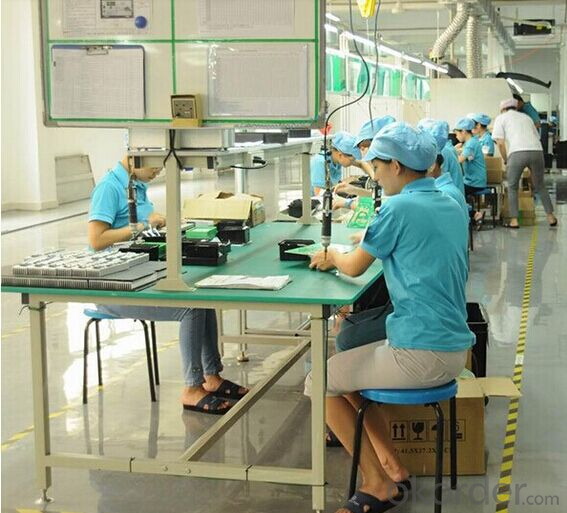
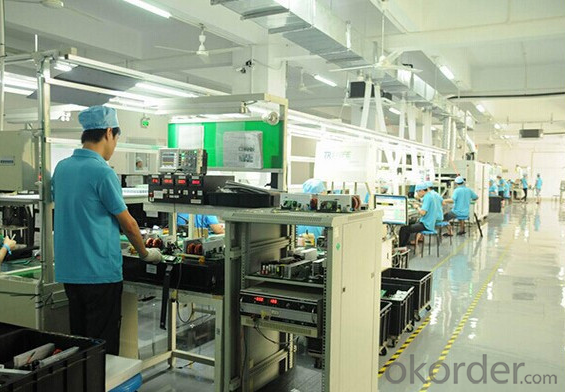
4. MPPT Solar Charger Controller FAQ:
We have organized several common questions for our clients, may help you sincerely:
1. How to choose a right solar controller?
Tell us your demand, then our sales will recommend a suitable one to you.
2. What is the solar inverter warranty?
Our product warranty is valid for 12 months after delivery. We undertake to repair any malfunctioned units due to defective components of inadequate workmanship ,but specially expecting any defects resulting from normal wear and tear of improper use of the products.
3. How long can we receive the product after purchase?
a.sample orders will be delivered from our factory within 7working days .
b.General orders(under 2000pcs) will be delivered from our factory within 25 working days.
c. Bulk orders (over 2000pcs )will be delivered from our factory within 35 working days at most
4. What is the payment term?
T/T (Telegraphic transfer) / Letter of credit
- Q: Can a solar controller be used in a solar-powered cooling system?
- Yes, a solar controller can be used in a solar-powered cooling system. A solar controller helps regulate the flow of electricity between the solar panels and the cooling system, ensuring efficient operation and protecting the system from overcharging or damage.
- Q: Can a solar controller be used in off-grid applications?
- Yes, a solar controller can definitely be used in off-grid applications. In fact, it is an essential component of off-grid solar systems as it regulates the charging and discharging of batteries, ensuring optimal performance and extending battery life. The solar controller helps to manage the flow of electricity between the solar panels, batteries, and loads, ensuring that the batteries are charged efficiently and preventing overcharging or deep discharging.
- Q: What is the maximum cable size that can be used between the solar panels and the solar controller?
- Various factors, such as the distance between the solar panels and the solar controller, the current capacity of the panels, and the limitations on voltage drop, influence the maximum cable size that can be used. It is generally recommended to use larger cable sizes to minimize voltage drop and ensure efficient power transmission. To determine the maximum cable size, one must consider the cable's current carrying capacity and the voltage drop over the distance. The manufacturer typically defines the current carrying capacity, which can be found in the cable specifications. It is crucial to select a cable capable of handling the maximum current generated by the solar panels. Voltage drop is another crucial factor to consider. It occurs due to the cable's resistance and can impact the overall performance and efficiency of the solar system. The acceptable voltage drop varies depending on the system's requirements, but a general guideline is to keep it below 3% for optimal performance. To calculate the maximum cable size, one can use the voltage drop formula and the cable's current capacity. By considering the distance between the panels and the controller, the current generated by the panels, and the acceptable voltage drop, one can determine the appropriate cable size. For specific solar panels and controllers, it is advisable to consult with a professional or refer to the manufacturer's guidelines. They can provide accurate recommendations based on the system's requirements and ensure the optimal cable size is chosen for maximum performance and safety.
- Q: What is the role of a solar controller in preventing battery memory effect?
- The role of a solar controller in preventing battery memory effect is to regulate and optimize the charging process of the battery. It ensures that the battery is not overcharged or discharged excessively, which helps to prevent the memory effect. By maintaining the battery at the optimal charge level, the solar controller helps to extend the battery lifespan and maximize its performance.
- Q: How do I calculate the maximum power handling capacity for a solar controller?
- To calculate the maximum power handling capacity for a solar controller, you need to consider a few key factors. First, you should check the specifications of the solar controller to see if it provides a maximum power handling capacity rating. This rating is usually mentioned in terms of watts (W) or amperes (A). If it is provided, you can simply use that value as the maximum power handling capacity. If the rating is not mentioned, you can calculate the maximum power handling capacity by using the formula P = V * I, where P is power in watts, V is voltage in volts, and I is current in amperes. To find the maximum current rating, you can refer to the solar panel's specifications and note the maximum current output. Keep in mind that the solar panel's maximum current output may vary depending on factors like temperature and sunlight intensity. Next, you need to determine the voltage at which the solar controller operates. This information can be found in the specifications of the solar controller. Once you have both the maximum current and voltage values, multiply them together to calculate the maximum power handling capacity. For example, if the solar panel's maximum current output is 5A and the solar controller's operating voltage is 12V, the maximum power handling capacity would be 5A * 12V = 60W. It is recommended to choose a solar controller with a power handling capacity slightly higher than the maximum power output of your solar panels. This allows for some headroom and ensures that the solar controller can handle the peak power generated by the panels without overloading or damaging the system.
- Q: Can a solar controller be used in a solar-powered electric helicopter system?
- Yes, a solar controller can be used in a solar-powered electric helicopter system. The solar controller is responsible for managing the flow of power from the solar panels to the batteries, ensuring optimal charging and preventing overcharging. In a solar-powered electric helicopter system, the solar controller plays a crucial role in regulating the power supply, maximizing energy efficiency, and extending the flight time of the helicopter.
- Q: What are the types of solar controllers?
- Solar controllers can be divided into three main types: PWM controllers, MPPT controllers, and basic on-off controllers. The most common type is the PWM controller, which is suitable for small to medium-sized solar systems. These controllers regulate the voltage output from the solar panels by rapidly switching the power on and off, thereby maintaining a constant voltage for the battery. In terms of affordability, ease of use, and efficiency, PWM controllers are a good choice for most applications. On the other hand, MPPT controllers are more advanced and efficient compared to PWM controllers. They track the maximum power point of the solar panels by adjusting the voltage and current to match the battery requirements. This feature enables MPPT controllers to extract the maximum amount of power from the solar panels, even in low-light or partially shaded conditions. These controllers are ideal for larger solar systems and can significantly enhance the overall efficiency and power output. For very small solar systems where cost and complexity are major concerns, basic on-off controllers are typically used. These controllers directly connect the solar panels to the battery and disconnect the panels when the battery reaches its full charge to prevent overcharging. Although they are inexpensive, basic on-off controllers offer limited functionality and are not as efficient as PWM or MPPT controllers. Choosing the right solar controller depends on factors such as the size of the solar system, available budget, and desired efficiency. It is crucial to select the appropriate controller to ensure optimal performance and longevity of the solar system.
- Q: Does a solar controller have a built-in timer function?
- Yes, a solar controller typically has a built-in timer function. This feature allows users to set specific time intervals or schedules for when the solar system should be activated or deactivated. The timer function is especially useful in applications where energy consumption needs to be regulated or when the solar system needs to operate during specific hours of the day. By utilizing the built-in timer function, users can maximize the efficiency and effectiveness of their solar power system.
- Q: Can a solar controller be used in a solar-powered electric fence system?
- Yes, a solar controller can be used in a solar-powered electric fence system. A solar controller helps regulate the charging and discharging of the batteries in the system, ensuring efficient and effective operation of the electric fence.
- Q: Can a solar controller be used with a solar-powered sports facility?
- Yes, a solar controller can be used with a solar-powered sports facility. A solar controller is an essential component that regulates the charging and discharging of batteries in a solar power system, ensuring optimal performance and preventing damage. In a solar-powered sports facility, the solar controller would help manage the flow of energy from the solar panels to power the facility's electrical needs and store any excess energy in batteries for later use.
Send your message to us
Windy Nation MPPT Electronic Controller High Efficiency 45A Good Quality Solar Controllers
- Loading Port:
- Shekou
- Payment Terms:
- TT or LC
- Min Order Qty:
- 100 pc
- Supply Capability:
- 100000 pc/month
OKorder Service Pledge
OKorder Financial Service
Similar products
Hot products
Hot Searches
Related keywords
